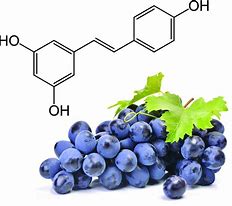Why Our Resveratrol is Scientifically Better For You
January 8, 2025 – Steve Bruner


RED WINE RESVEATROL
Natural Biology's Vintage Resveratol 100% is exclusively sourced from French Red Wine Grapes found in the Rhone Valley of France.
Resveratrol from French Red Wine Grapes, such as those sourced from the Rhone Valley, is often marketed as having higher absorption and bioavailability compared to resveratrol derived from Polygonum cuspidatum. The improved performance of grape-sourced resveratrol is attributed to several key factors unique to the grape matrix:
1. Presence of Natural Co-Factors
- French Red Wine Grapes contain natural co-factors like quercetin, catechins, anthocyanins, and other polyphenols that synergize with resveratrol.
- These co-factors may inhibit enzymes responsible for resveratrol's rapid metabolism, such as UDP-glucuronosyltransferase (UGT), thereby increasing the time resveratrol stays in its active form.
2. Lipophilic Components in the Grape Matrix
- Grapes have naturally occurring lipophilic compounds such as fatty acids or other phytochemicals that enhance the solubility of resveratrol.
- Improved solubility helps resveratrol cross the intestinal barrier more efficiently, contributing to higher systemic absorption.
3. Bioavailability Enhancers in Grapes
- Certain compounds in grapes, like oligomeric proanthocyanidins (OPCs), are believed to act as natural bioavailability enhancers. These may prevent rapid metabolism and allow resveratrol to circulate in its free, active form for a longer duration.
4. Synergy with Food Matrices
- When consumed in grape form or derived from wine sources, resveratrol may interact with natural sugars, fibers, and other grape components, facilitating better absorption in the gut.
- The red wine matrix itself (in wine-derived supplements) is particularly effective because it delivers resveratrol in a pre-extracted form, increasing bioavailability.
5. Enhanced Stability of Grape-Derived Resveratrol
- Resveratrol from French Red Wine Grapes often has a more stable trans-resveratrol form, which may be less prone to degradation compared to that extracted from Polygonum cuspidatum.
Why Polygonum Cuspidatum May Fall Short
- While Polygonum cuspidatum provides a high concentration of trans-resveratrol, it lacks the natural synergistic components present in grapes that enhance absorption and bioavailability.
- Additionally, the rapid metabolism of resveratrol when consumed in its isolated form makes it less effective without modifications like liposomal delivery.
Summary of French Red Wine Grape Resveatrol
The matrix of French Red Wine Grapes from regions like the Rhone Valley offers a more complex and bioactive environment for resveratrol absorption. Companies like Natural Biology capitalize on this synergy by providing a product that leverages the whole grape's phytochemical profile, enhancing the absorption and systemic activity of trans-resveratrol, making it potentially more effective than Polygonum cuspidatum-derived resveratrol.
POLYGONUM CUSPIDATUM
Why Polygonum Cuspidatum has a low bioavailability of transreveratrol.
